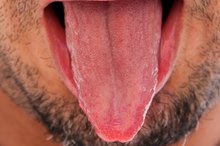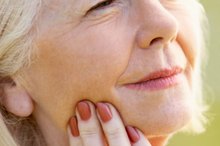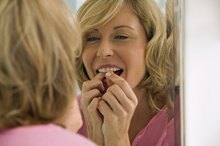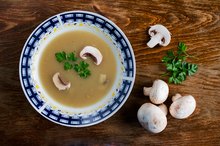How to Eat With a Tongue Ring
The Association of Professional Piercers recommends using ice and elevating your head while sleeping during the healing of your tongue piercing. Rinsing your mouth with an alcohol-free mouthwash and avoiding oral sex and deep kissing also helps to heal your tongue piercing safely and successfully. Eating while your tongue piercing is healing can be difficult and painful if you are not aware how to handle meals and eat with your new jewelry.
Wash your hands. Tighten the beads on your barbell before and after eating to prevent losing or swallowing a bead. When you chew your food, the movement of your tongue and food hitting your tongue barbell can cause your beads to loosen or fall off.
Tongue Piercing Pain Relief
Learn More
Fix meals when you have time to sit down and eat. Chew slowly to prevent chipping or cracking a tooth while chewing. Your piercer places a long barbell into your tongue piercing during healing to allow for swelling. The long barbell can move while chewing and get caught in between your teeth, causing a chip or crack from the metal of the barbell.
Prepare foods that are cool and bland. Hot, spicy or crunchy foods can cause pain while you are eating with your healing tongue ring. Small pieces of crunchy foods can become stuck in your tongue piercing channel and cause irritation, tearing or pain. Cold or frozen foods, such as ice cream, can soothe your fresh tongue piercing 1.
How to Get Rid of Swollen Taste Buds
Learn More
Eat with disposable forks and spoons when possible. Metal silverware may harbor bacteria even if washed. Do not share utensils with friends or family to avoid bacterial infections. Place the fork or spoon in the side of your mouth while eating. Placing the utensil in the center of your mouth may cause pain or discomfort if the utensil hits your barbell.
Tips
Avoid straws while eating and drinking for the suction may irritate your tongue piercing.
Clean your tongue piercing after eating with an alcohol-free mouthwash.
Warnings
Follow the aftercare guidelines for your tongue piercing that your professional piercer gives you; do not follow advice from friends and family.
Related Articles
References
- Infinite Body: Special Care for Oral Piercings
- Kim AM, Keenan BT, Jackson N, et al. Tongue fat and its relationship to obstructive sleep apnea. Sleep. 2014;37(10):1639–1648. Published 2014 Oct 1. doi:10.5665/sleep.4072
- Bartlett JA, van der Voort Maarschalk K. Understanding the oral mucosal absorption and resulting clinical pharmacokinetics of asenapine. AAPS PharmSciTech. 2012;13(4):1110–1115. doi:10.1208/s12249-012-9839-7
- National Organization for Rare Diseases. Tongue Cancer.
- Dotiwala AK, Samra NS. Anatomy, head and neck, tongue. [Updated 2019 Feb 8]. In: StatPearls. Treasure Island (FL): StatPearls Publishing; 2019 Jan.
- Moore KL and AF Dalley. Clinically Oriented Anatomy. Lippincott Williams & Wilkins, 4th edition, 1999, pp. 940-947.
- Stone M, et al. Structure and variability in human tongue muscle anatomy. Comput Methods Biomech Biomed Eng Imaging Vis. 2018;6(5):499–507. Published online 2016 Apr 8. doi:10.1080/21681163.2016.1162752
Tips
- Avoid straws while eating and drinking for the suction may irritate your tongue piercing.
- Clean your tongue piercing after eating with an alcohol-free mouthwash.
Warnings
- Follow the aftercare guidelines for your tongue piercing that your professional piercer gives you; do not follow advice from friends and family.
Writer Bio
Maude Coffey retired after 10 years working as a professional body modification artist in the tattoo industry. She is certified in principles of infection control and blood-borne pathogens. Coffey received additional training and classes, such as anatomy, jewelry standards and aftercare, from the Association of Professional Piercers. Coffey aims to educate about safe tattooing and piercing practices while writing for various websites.









